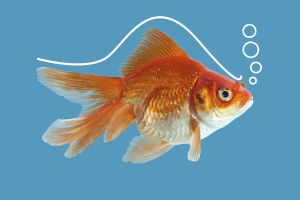
Humans express their emotions through eye contact, body language, verbal communication, and other means. Similarly, cats have their own ways of communicating with each other.
Today, we will explore the fascinating world of feline communication and understand how cats interact using various methods.
1. Communication by Odor
Cats possess an acute sense of smell and a vomeronasal organ, which is crucial for transmitting olfactory signals. This organ helps the nose collect scents from the environment and pheromones from other cats, which are essential for marking territory and conveying information. Scent communication is one of the most effective ways for cats to interact.
Cats have secretory glands on the sides of their cheeks, the soles of their feet, and around their anus. These glands secrete pheromones, which play a vital role in marking territory and transmitting information to other cats. By rubbing their cheeks on objects, cats leave behind their scent, signalling their presence and establishing ownership. This form of communication is subtle yet highly effective in the feline world.
2. Communication by Sound
Cats use a variety of vocalizations to express different emotions. For example, a soft meow typically indicates a relaxed and happy mood. In contrast, a loud and quick meow can signify nervousness or discomfort. When a cat makes a loud, breathing sound, it often indicates fear or serves as a threat or warning to other cats.
The pitch, volume, and duration of a cat's meow can convey different messages. A purr usually signifies contentment, while a hiss or growl is a clear sign of aggression or fear. By paying attention to these sounds, we can gain insight into a cat's emotional state and respond accordingly.
3.Communication by Motion
Cats also communicate through body movements, with different gestures conveying specific messages. While humans may struggle to interpret these movements, cats can easily read each other's intentions through their body language.
For instance, an arched back indicates that a cat is in an aggressive state. Conversely, a raised tail suggests that the cat wants to be close to the other individual. A lowered tail signifies that the cat is refusing contact. Other body movements, such as twitching ears or a flicking tail, can also provide valuable clues about a cat's mood and intentions.
Observing a cat's posture and movements can help us understand their emotional state. For example, a relaxed cat will often lie down with its paws tucked under its body, while an agitated cat may crouch with its ears flattened. By learning to recognize these signals, we can better appreciate a cat's feelings and respond appropriately.
4. Communication by Eye Contact
Eye contact is another important form of feline communication. If your cat looks at another cat and winks—usually a quick and subtle movement—it indicates acceptance of the other cat's approach and attention. This gesture is often referred to as a "cat kiss" and is a sign of trust and affection.
When interacting with another cat, if your cat looks away, sticks out its tongue, licks its mouth, then crouches down and flattens its ears, this indicates that your cat feels threatened and fearful. These subtle signals help cats navigate social interactions and avoid conflicts.
Cats are highly social animals, despite their reputation for independence. They greet each other by touching noses, show affection by rubbing their heads and sides, and sometimes even hook their tails together. Cats rarely rub each other's backs, which is why some cats dislike having their backs petted for long periods by humans. Their preferred areas of contact are usually the head and sides, where scent glands are concentrated.
By now, you have learned some basic aspects of cat communication. Spend time observing and interacting with your cat to see if you can decode their signals. Understanding these forms of communication can strengthen the bond between you and your feline friend, enhancing your relationship and ensuring their well-being.


